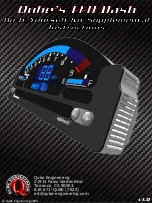
TK 56430-18-IP-EN
27
11. Begin evacuation of system (continue with the installation while system is being evacuated).
12. Route and connect condenser harness to evaporator(s).
13. Install evaporator cover, drain hoses and if required, the defrost heater wires.
14. Install driver’s controller inside vehicle and connect fused power wire to switched ignition power source.
15. Install standby receptacle box securely onto vehicle ( Electric Standby SmartPower models only).
16. Connect condenser harness to engine driven compressor.
17. Install unit ground cable to battery
18. Install in-line fuse onto unit power cable and connect to vehicle battery.
19. Charge the system with refrigerant (after evacuation process is completed).
20. Operate the unit in all modes.
21. Adjust SPR and CPR valves (if applicable).
22. Complete the Commissioning Form.
23. Reinstall condenser covers, clean the vehicle and return to customer.
N
No
otte
e:: Always refer to the unit specific installation manual included with each unit. These manuals cover specific
installation requirements such as how to remove components to access mounting locations and refrigeration
fittings.
The following pages describe nosemount and rooftop mounted installation standards and procedures.
Nosemount Condenser Installation
The following points must be addressed before installing the nosemount condenser:
•
Refer to the Safety Section regarding holding charge precautions. DO NOT release the holding charge until
necessary to prevent moisture from entering the system.
•
The front wall of the vehicle must be able to support the weight of the condenser. Additional supports (installer
supplied) may be required. Unit weights can be found in the product brochures.
•
Nosemount unit must not interfere with tilt cab function. Tilt cab to nosemount unit clearances must be checked
before installing the condenser.
•
The use of a device capable of safely lifting your particular unit is required.
•
The use of a work platform is recommended to safely install the condenser.
N
No
otte
e:: Depending on the model, the condenser cover and fan assembly may need to be modified prior to installation.
Additional components may need to be removed to access unit mounting holes and refrigeration fittings. Refer
to the unit specific installation manual for details.
The following points must be addressed when installing the nosemount condenser:
•
Use template to center condenser onto cargo box and to locate mounting and access holes.
•
Drill correct size holes for the mounting bolts and for the refrigerant/electrical access holes.
•
Silicone sealer must be applied around all mounting holes prior to installing condenser.
•
Use unit lifting points and appropriate lifting device to install condenser.
•
The condenser must be mounted directly to the cargo box front wall.
DO NOT use any rubber washers or gasket
material between the condenser unit and the cargo box front wall.
•
All condenser mounting hardware must be the correct size, grade, finish and tightened securely. Refer to
(
) in this section.
N
No
otte
e:: Insulation tape MUST be applied on the backside of the condenser unit before installing it to the wall. This is
supplied from Factory.
Содержание V-200 10
Страница 109: ...TK 56430 18 IP EN 109 N No ot te es s...
Страница 110: ...110 TK 56430 18 IP EN N No ot te es s...
Страница 111: ...TK 56430 18 IP EN 111 N No ot te es s...
















































